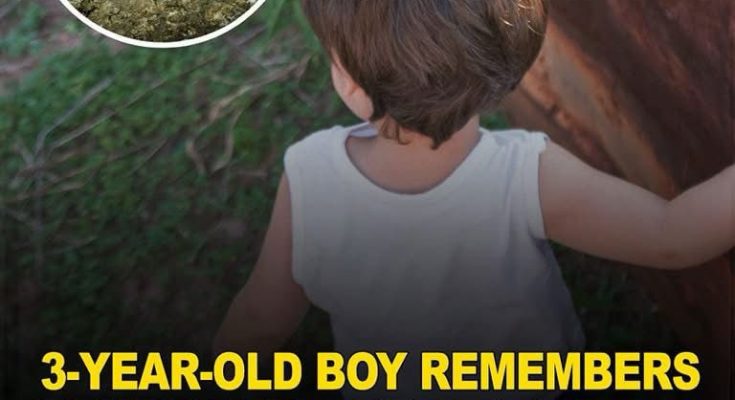In a small, quiet village in the Golan Heights near the border of Syria and Israel, a bizarre and unsettling story captured the attention of both the local community and experts around the world. A three-year-old boy from the Druze community shocked everyone when he claimed he remembered being murdered in a past life.

While it’s not unusual for young children to have vivid imaginations, what happened next pushed this case far beyond fantasy. The child described, with uncanny detail, how he died and even led elders to a specific location where he insisted his body had been buried. Incredibly, at the spot he pointed to, villagers unearthed a human skeleton along with an old axe—the very weapon he said had been used to kill him. This startling discovery gave his story a chilling credibility that was hard to ignore. The case gained further legitimacy when Dr. Eli Lasch, a respected physician known for his medical work in Gaza, happened to witness the boy’s statements firsthand. His detailed account of what the child said was later recorded in a book by German therapist and author Trutz Hardo, Children Who Have Lived Before: Reincarnation Today.
According to Dr. Lasch, the boy’s recollections were so consistent, precise, and detailed that it was nearly impossible to explain them away as coincidence or imagination. He had never met anyone connected to the life he was describing, yet he spoke of people and places with uncanny familiarity. One especially haunting detail was a prominent red birthmark on the boy’s head—exactly where he said he had been fatally struck in his previous life. In the Druze belief system, which spans communities in Syria, Lebanon, and Israel, there is a long-standing view that birthmarks can be tied to wounds from past lives. This cultural belief gave more weight to the boy’s testimony and caused even some skeptics in the village to reconsider. As his memories continued to unfold, the boy stunned the community even further by identifying the man who he said had killed him.
The accused initially denied any wrongdoing, but after the discovery of the bones and the axe precisely where the boy said they would be, local reports claim the man privately admitted to the crime. This admission sent shockwaves through the region and reignited global interest in the idea of reincarnation and the mysteries surrounding consciousness. While skeptics might attribute the entire case to a chain of bizarre coincidences, many see it as compelling evidence that reincarnation could be real. It raises profound questions about memory, the soul, and whether human consciousness can transcend one lifetime and carry information into the next. And this isn’t the only story of its kind. Around the world, there have been similar reports of young children who seem to remember lives they never lived.
One of the most famous American cases involved James Leininger, a boy from Louisiana who began having terrifying nightmares about dying in a World War II fighter plane crash. Over time, James began naming specific aircraft, a squadron, and even an aircraft carrier—details far beyond what any young child should know. Eventually, his claims were traced to a real fighter pilot named James Huston, who died in the exact way James described. Though initially skeptical, his parents were convinced by the sheer amount of accurate historical detail their son provided. In another case from 1930s India, a four-year-old girl named Shanti Devi claimed to remember her previous life in a town far from where she lived. She named her former husband, described their home, and spoke about her death during childbirth. Investigators looked into her story and verified many of her claims. The case gained so much attention that even Mahatma Gandhi launched an inquiry, which ultimately confirmed her statements. Birthmarks often seem to play a significant role in these cases. Dr. Ian Stevenson, a psychiatrist at the University of Virginia, spent decades researching children who claimed to recall past lives. He studied over 2,500 cases and frequently found connections between a child’s birthmarks or physical abnormalities and the injuries they claimed to have suffered in a past life. His research has laid the foundation for ongoing scientific exploration of reincarnation. Continuing his work, Dr. Jim Tucker focuses on children aged two to five, the most common age range for past-life memories to emerge. He’s also exploring whether consciousness might exist independently of the physical brain—a concept being seriously considered in areas like quantum physics and near-death research. Reincarnation beliefs exist all over the world, from Hinduism and Buddhism to Native American and African spiritual traditions, all of which include some idea of rebirth or the return of the soul. The case of the young boy in the Golan Heights remains one of the most compelling and mysterious examples to date. Whether you see it as proof of life after death or simply an incredible anomaly, this story forces us to rethink what we know about memory, identity, and the human experience—and until science provides all the answers, these stories will continue to spark curiosity and wonder around the world.


